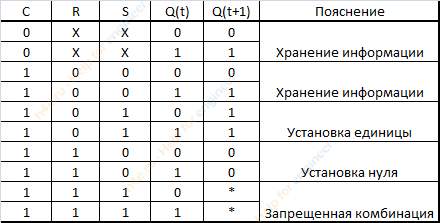Answer the question
In order to leave comments, you need to log in
Explain the truth table for the rs flip-flop. Why do the same values of r and s produce different output values?


Can you explain how to run values according to this scheme, otherwise I don’t understand at all due to lack of experience in this area? What is Q(t) b Q(t+1)? And how do the same input values of two rows in a table produce different output values? Needed for credit.
Sorry for the punctuation errors. Thank you!
Answer the question
In order to leave comments, you need to log in
Yes, everything is very simple. Consider, for example, "unit setting". If the initial output state of Q(t) was 0, then the flip-flop will go to state 1.
If the initial state of Q(t) was 1, then the flip-flop will remain at 1.
Didn't find what you were looking for?
Ask your questionAsk a Question
731 491 924 answers to any question